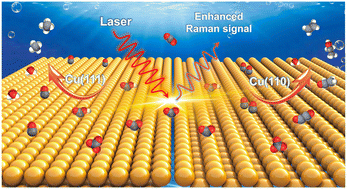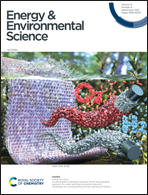Elucidating electrochemical CO2 reduction reaction processes on Cu(hkl) single-crystal surfaces by in situ Raman spectroscopy†
Abstract
Cupric materials are known to catalyze the electrochemical CO2 reduction reaction (CO2RR) and significantly improve the selectivity of multi-carbon products. Surface facets and structural effects play a critical role in the CO2RR. However, these surface mechanisms are poorly understood, and identifying trace intermediates on atomically-flat Cu(hkl) single-crystal surfaces, in situ, is a tremendously challenging task requiring sophisticated technical know-how. Here, in situ Raman spectroscopy was used to provide critical evidence of CO2RR intermediates, especially the selectivity-determining intermediates *OCCO and *CH2CHO on Cu(hkl) surfaces. Combining the spectroscopic results with theoretical calculations, Cu(111) facilitates the generation of C1 products through the formation of *COOH and *CO, while Cu(110) further generates C2 through the pathway of *OCCO and *CH2CHO. In addition, high KHCO3 concentrations facilitate the formation of the *OCCO structure, promoting C2 products. This work provides a significant breakthrough for understanding the CO2RR mechanism that can guide the design of high-efficiency catalysts.



 Please wait while we load your content...
Please wait while we load your content...